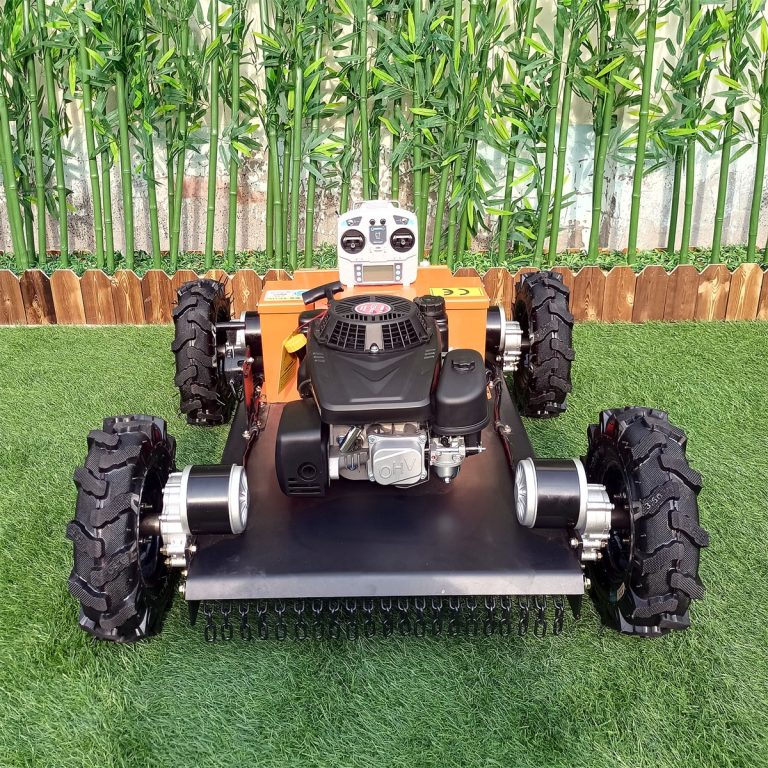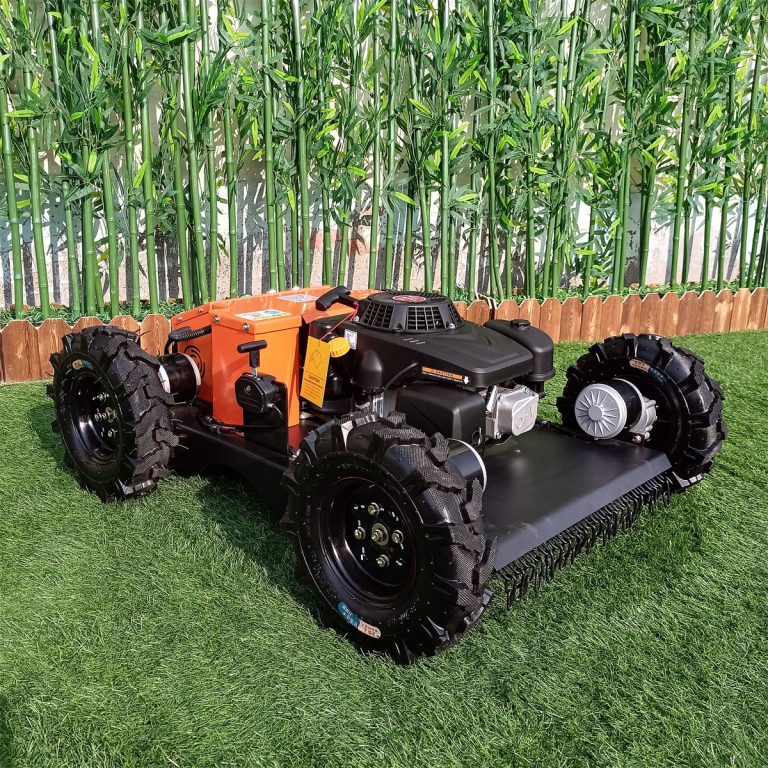Table of Contents
Exceptional Performance of the Loncin 764CC Gasoline Engine
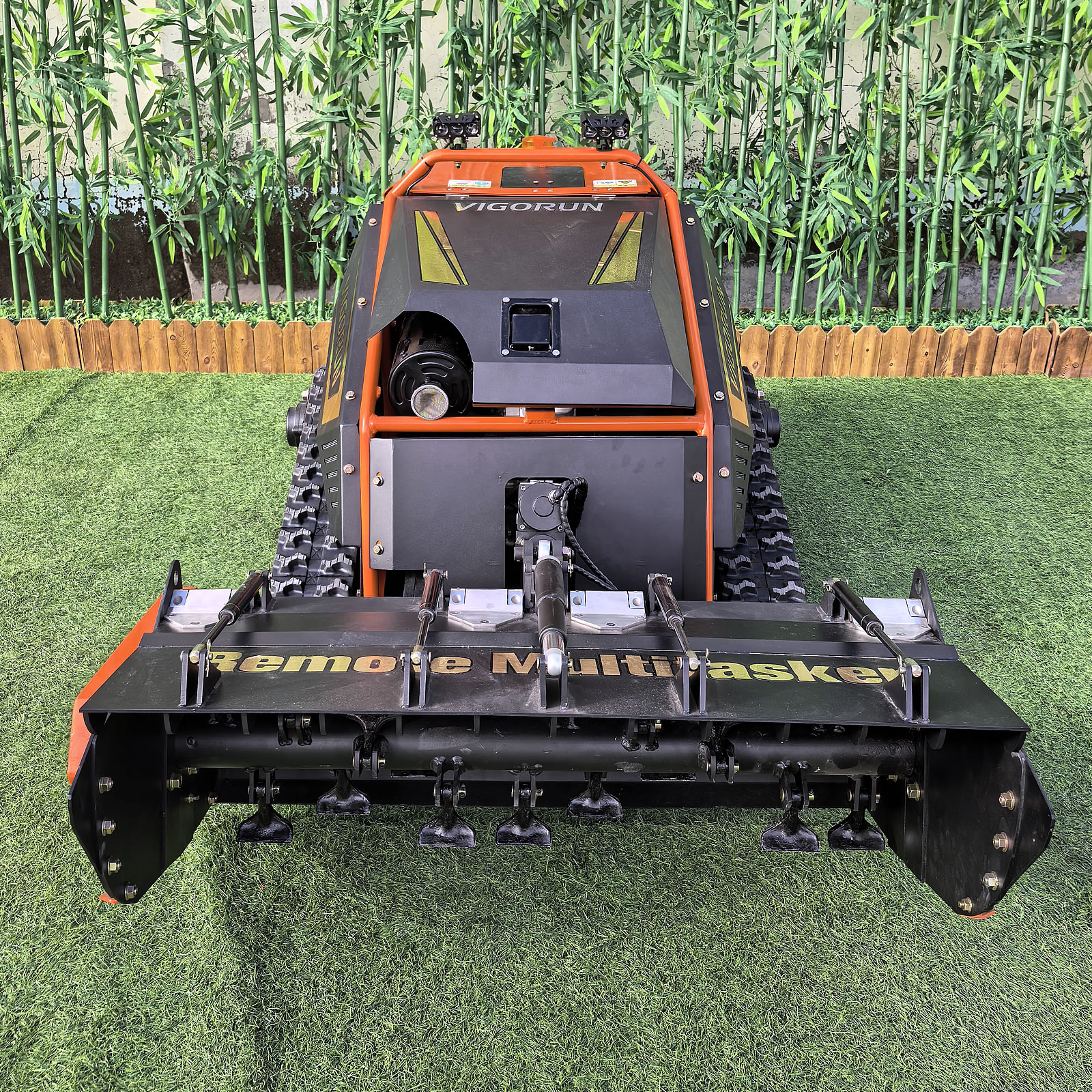 The Loncin 764CC gasoline engine cutting height adjustable rubber track remotely controlled hammer mulcher is equipped with a robust V-type twin-cylinder gasoline engine, specifically the Loncin model LC2V80FD. This engine boasts a rated power of 18 kW at 3600 rpm, ensuring strong performance for various tasks. The high displacement of 764cc allows the machine to handle demanding operations effectively.
The Loncin 764CC gasoline engine cutting height adjustable rubber track remotely controlled hammer mulcher is equipped with a robust V-type twin-cylinder gasoline engine, specifically the Loncin model LC2V80FD. This engine boasts a rated power of 18 kW at 3600 rpm, ensuring strong performance for various tasks. The high displacement of 764cc allows the machine to handle demanding operations effectively.
 The engine’s design includes a clutch that engages only when it reaches a predetermined rotation speed, enhancing operational efficiency. This feature ensures that the machine operates smoothly and reduces wear on its components, ultimately extending the machine’s lifespan. With this powerful engine, operators can tackle even the toughest mowing and mulching tasks with confidence.
The engine’s design includes a clutch that engages only when it reaches a predetermined rotation speed, enhancing operational efficiency. This feature ensures that the machine operates smoothly and reduces wear on its components, ultimately extending the machine’s lifespan. With this powerful engine, operators can tackle even the toughest mowing and mulching tasks with confidence.
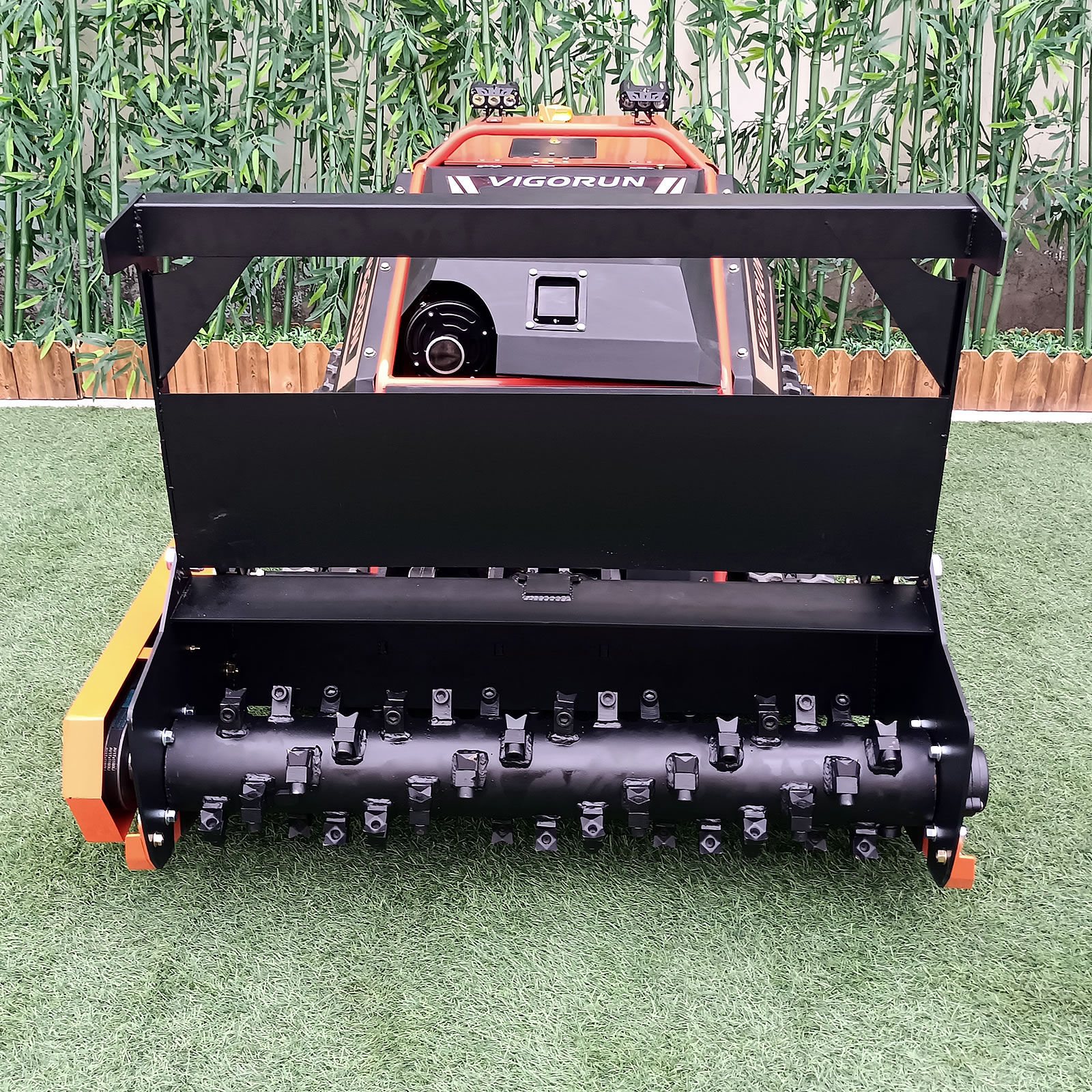 Moreover, the advanced engineering behind the Loncin 764CC gasoline engine ensures that it delivers consistent power output. Whether you are clearing dense vegetation or managing heavy grass growth, this engine is designed to perform under pressure, providing reliable results every time.
Moreover, the advanced engineering behind the Loncin 764CC gasoline engine ensures that it delivers consistent power output. Whether you are clearing dense vegetation or managing heavy grass growth, this engine is designed to perform under pressure, providing reliable results every time.
Innovative Features for Enhanced Usability
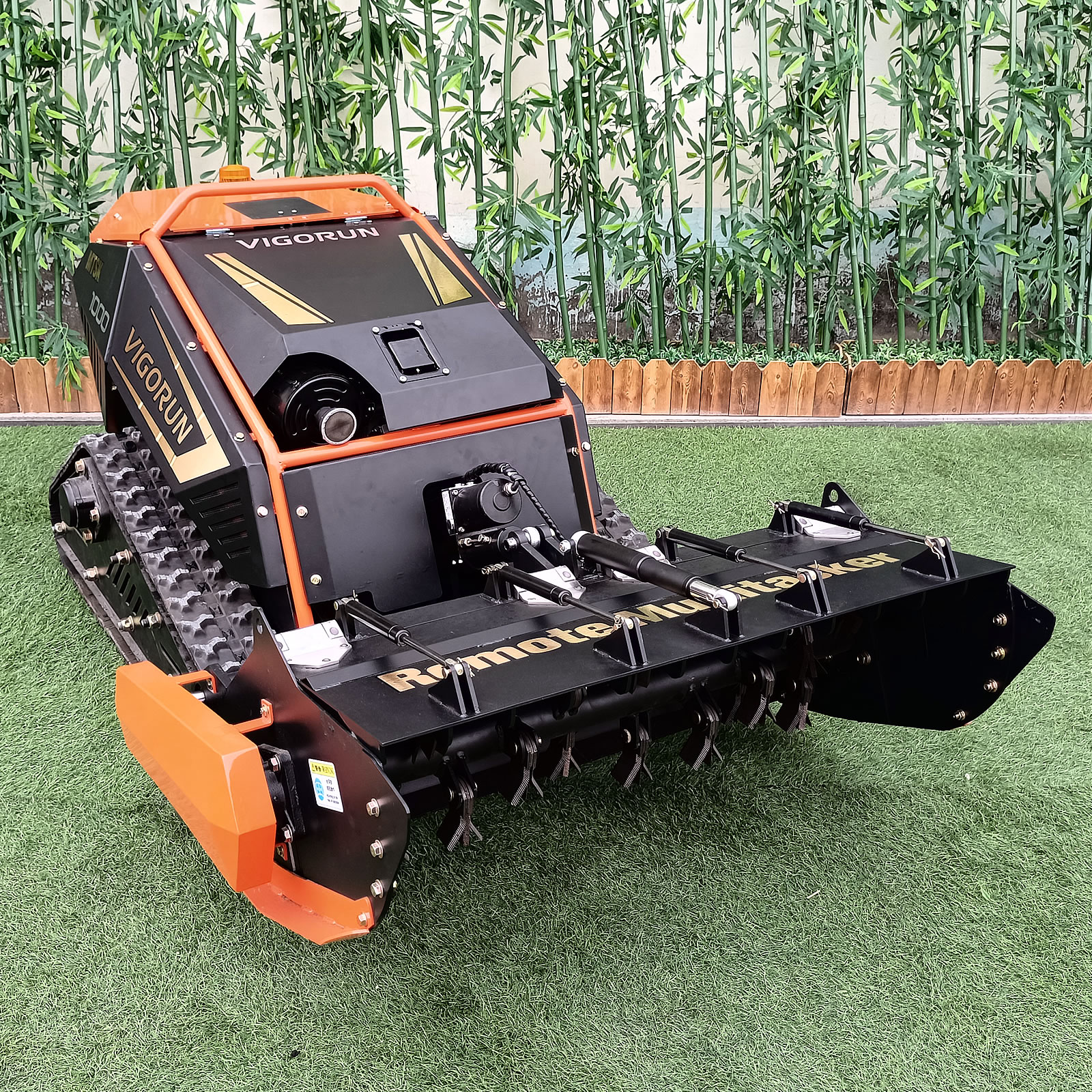
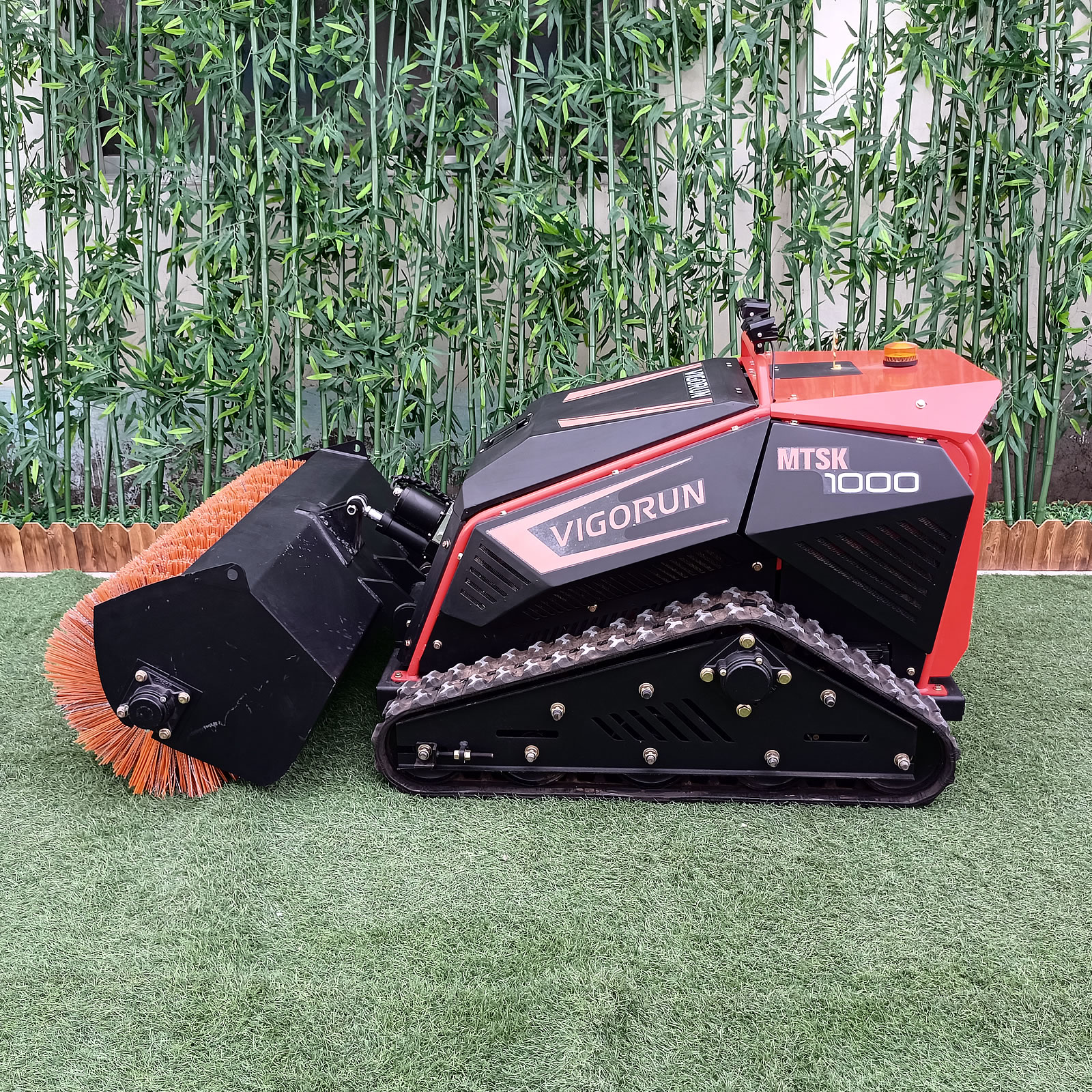 The Loncin 764CC gasoline engine cutting height adjustable rubber track remotely controlled hammer mulcher incorporates two 48V 1500W servo motors that provide exceptional power output. These motors offer impressive climbing capabilities, making it ideal for navigating challenging terrains. The built-in self-locking function ensures that the machine remains stationary when not in use, significantly improving safety during operation.
Equipped with a high reduction ratio worm gear reducer, this machine multiplies the torque from the servo motors, delivering substantial output torque for climbing resistance. Even during power loss, the mechanical self-locking feature prevents the machine from sliding downhill, ensuring both safety and consistent performance on slopes.
Additionally, the intelligent servo controller plays a crucial role in the machine’s usability. It precisely regulates motor speed and synchronizes the left and right tracks, allowing for straight-line travel without constant adjustments. This innovation minimizes operator workload and reduces the risks associated with overcorrection, particularly on steep inclines.
The Loncin 764CC gasoline engine cutting height adjustable rubber track remotely controlled hammer mulcher incorporates two 48V 1500W servo motors that provide exceptional power output. These motors offer impressive climbing capabilities, making it ideal for navigating challenging terrains. The built-in self-locking function ensures that the machine remains stationary when not in use, significantly improving safety during operation.
Equipped with a high reduction ratio worm gear reducer, this machine multiplies the torque from the servo motors, delivering substantial output torque for climbing resistance. Even during power loss, the mechanical self-locking feature prevents the machine from sliding downhill, ensuring both safety and consistent performance on slopes.
Additionally, the intelligent servo controller plays a crucial role in the machine’s usability. It precisely regulates motor speed and synchronizes the left and right tracks, allowing for straight-line travel without constant adjustments. This innovation minimizes operator workload and reduces the risks associated with overcorrection, particularly on steep inclines.



